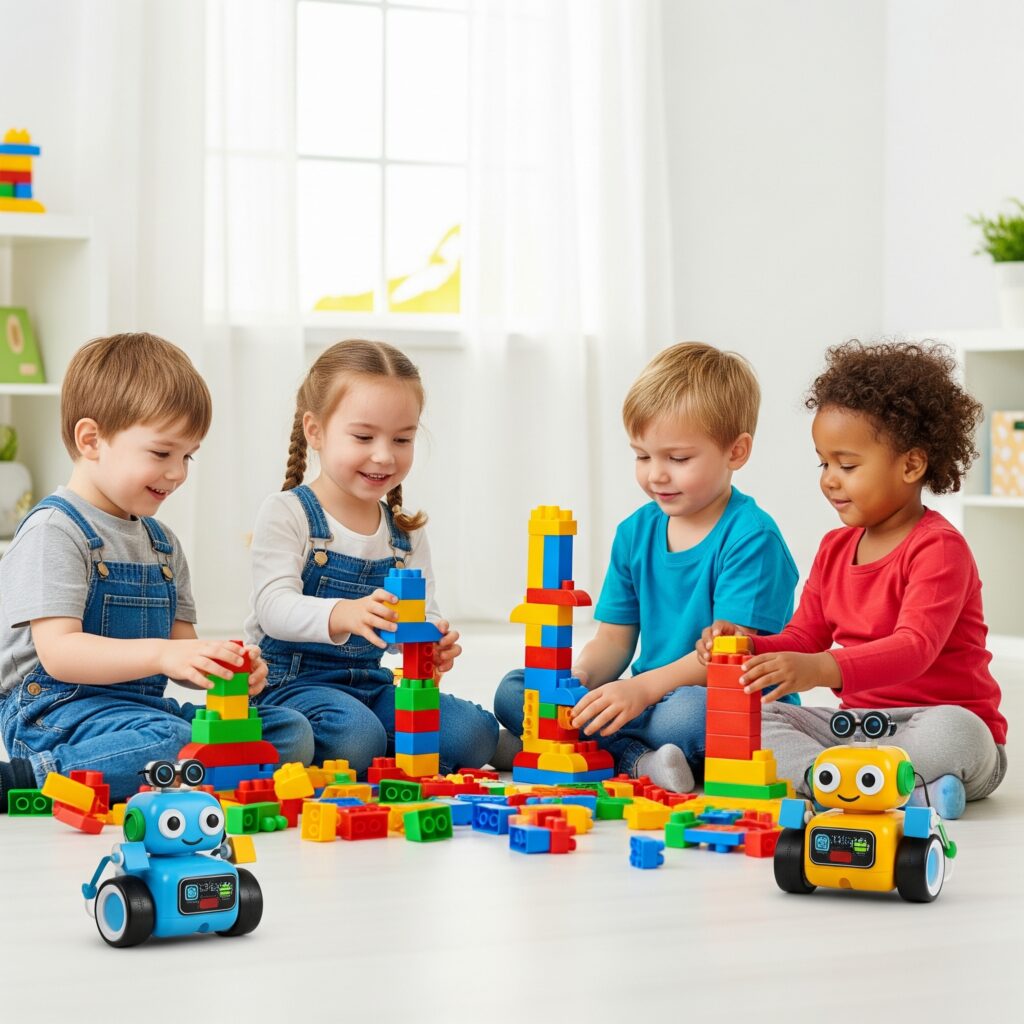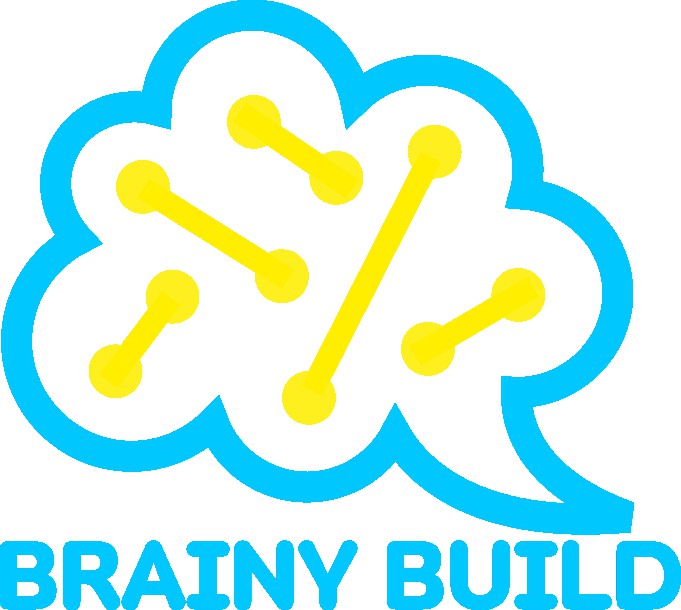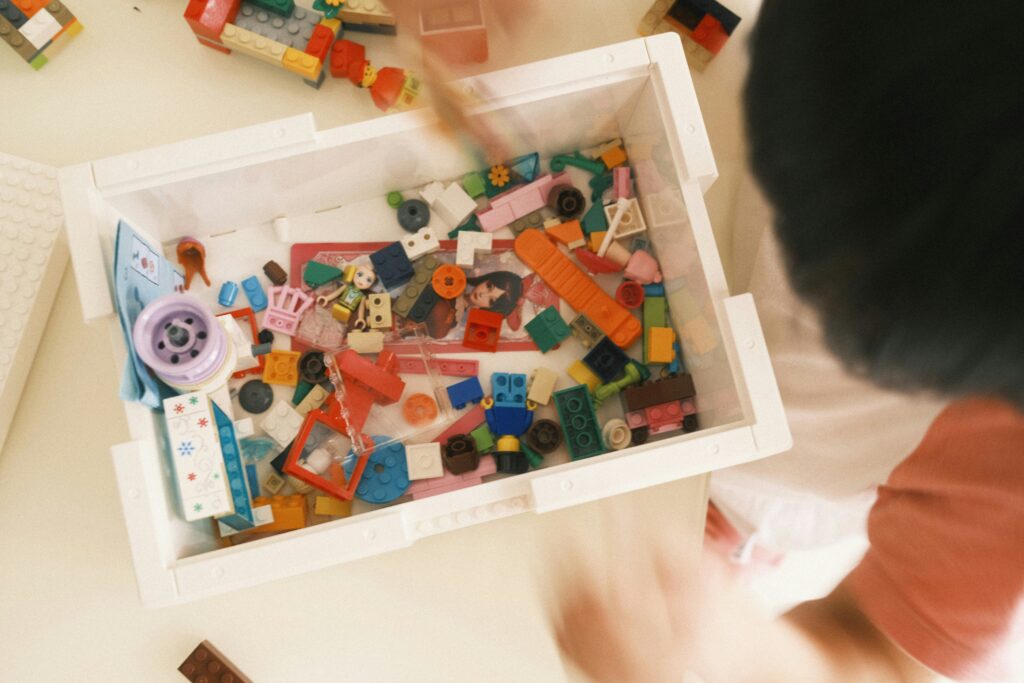Your cart is currently empty!
Welcome, parents of bright young sparks! If you’re looking to nurture your child’s budding curiosity in Science, Technology, Engineering, and Math (STEM), you’ve come to the right place. Choosing the perfect STEM toy can feel overwhelming with so many options out there. But don’t worry! This guide will help you select engaging, educational, and, most importantly, fun toys for your 5 to 7-year-old innovator.
What to Look For in a STEM Toy for Ages 5-7 🤔
At this age, children are developing rapidly. They’re moving from simple cause-and-effect understanding to more complex problem-solving. Here are key features to consider:
- Age-Appropriateness: This is crucial. A toy that’s too simple will be boring, while one that’s too complex will lead to frustration. Look for clear age recommendations (5-7, 6+, etc.) on the packaging.
- Safety First! 🛡️ Always ensure toys are made from non-toxic materials, are durable, and don’t have small parts that could be choking hazards, especially if younger siblings are around. Check for safety certifications.
- Open-Ended Play: The best STEM toys allow for creativity and multiple ways to play. Can your child use it in different scenarios? Can they invent their own games or structures with it?
- Clear Instructions (But Room for Experimentation): While open-ended play is key, good initial instructions can help your child get started and understand the toy’s basic mechanics. However, the toy should also encourage them to go “off-script.”
- Durability: Let’s face it, kids can be tough on their toys! Look for well-made items that can withstand enthusiastic play.
- Hands-On Engagement: Toys that require active participation – building, manipulating, experimenting – are far more effective than passive ones.

Top STEM Toy Categories & Examples for Young Innovators 🌟
Here are some popular categories that are fantastic for children aged 5-7:
- Building & Construction Sets:
- Why they’re great: These toys are powerhouses for developing spatial reasoning, fine motor skills, creativity, and understanding basic engineering principles.
- Examples:
- LEGO Classic or LEGO City sets: Offer versatility and endless building possibilities.
- Magna-Tiles or PicassoTiles: Magnetic tiles are fantastic for understanding 2D and 3D shapes and are easy for little hands to connect.
- Basic K’NEX or other interlocking rod/connector sets: Introduce more complex building mechanics.
- Early Coding & Robotics (Often Screen-Free): 🤖
- Why they’re great: These introduce foundational concepts of coding like sequencing, logic, and problem-solving in a playful, tangible way, often without needing a screen.
- Examples:
- Learning Resources Code & Go Robot Mouse: Kids build a maze and then program the mouse to find the cheese.
- Bee-Bot or Botley the Coding Robot: Programmable floor robots that follow a sequence of commands.
- Osmo Coding Starter Kit (uses an iPad but is very interactive): Combines physical blocks with on-screen action.
- Science Exploration Kits: 🔬
- Why they’re great: They encourage observation, experimentation, and a love for the natural world.
- Examples:
- “My First Science Kit” type products: Often include simple experiments with clear instructions focusing on basic chemistry or physics.
- Bug viewers/collection kits or magnifying glasses: Perfect for outdoor exploration and biology.
- Crystal growing kits: Visually exciting and teaches about solutions and crystal formation.
- Simple Machines & Early Engineering: ⚙️
- Why they’re great: Help children understand cause and effect, how things work, and basic physics concepts.
- Examples:
- Basic gear sets: Show how gears interact to transfer motion.
- Marble runs: Kids design and build tracks, learning about gravity, angles, and momentum.
- Introductory snap-together electronic kits (like some beginner Snap Circuits): Safely explore basic circuits.
Tips for Parents: Making the Most of STEM Play 👨👩👧👦
- Play Alongside Them: Your involvement can significantly enhance the learning experience. Ask open-ended questions like, “What do you think will happen if…?” or “How could we make this taller/stronger/faster?”
- Encourage Curiosity: Foster a “let’s find out” attitude. It’s okay if things don’t work the first time – that’s part of the discovery process!
- Connect to Real Life: Help them see how the concepts they’re playing with apply to the world around them (e.g., “This bridge you built is like the big bridge we drove over!”).
- Rotate Toys: Keep things fresh by rotating toys. This can make an old toy feel new again.
- Focus on the Process, Not Just the Product: Praise their effort, problem-solving strategies, and creativity, not just the final outcome.
Sparking a Lifelong Love of Learning ✨
Choosing the right STEM toy for your 5 to 7-year-old isn’t just about keeping them busy; it’s about igniting a passion for discovery, critical thinking, and innovation that can last a lifetime. By focusing on age-appropriateness, safety, and open-ended engagement, you can provide tools that will empower your young innovator to explore, create, and learn.
Happy building, experimenting, and coding!
What are your child’s favorite STEM toys in this age group? Share your recommendations in the comments below!

